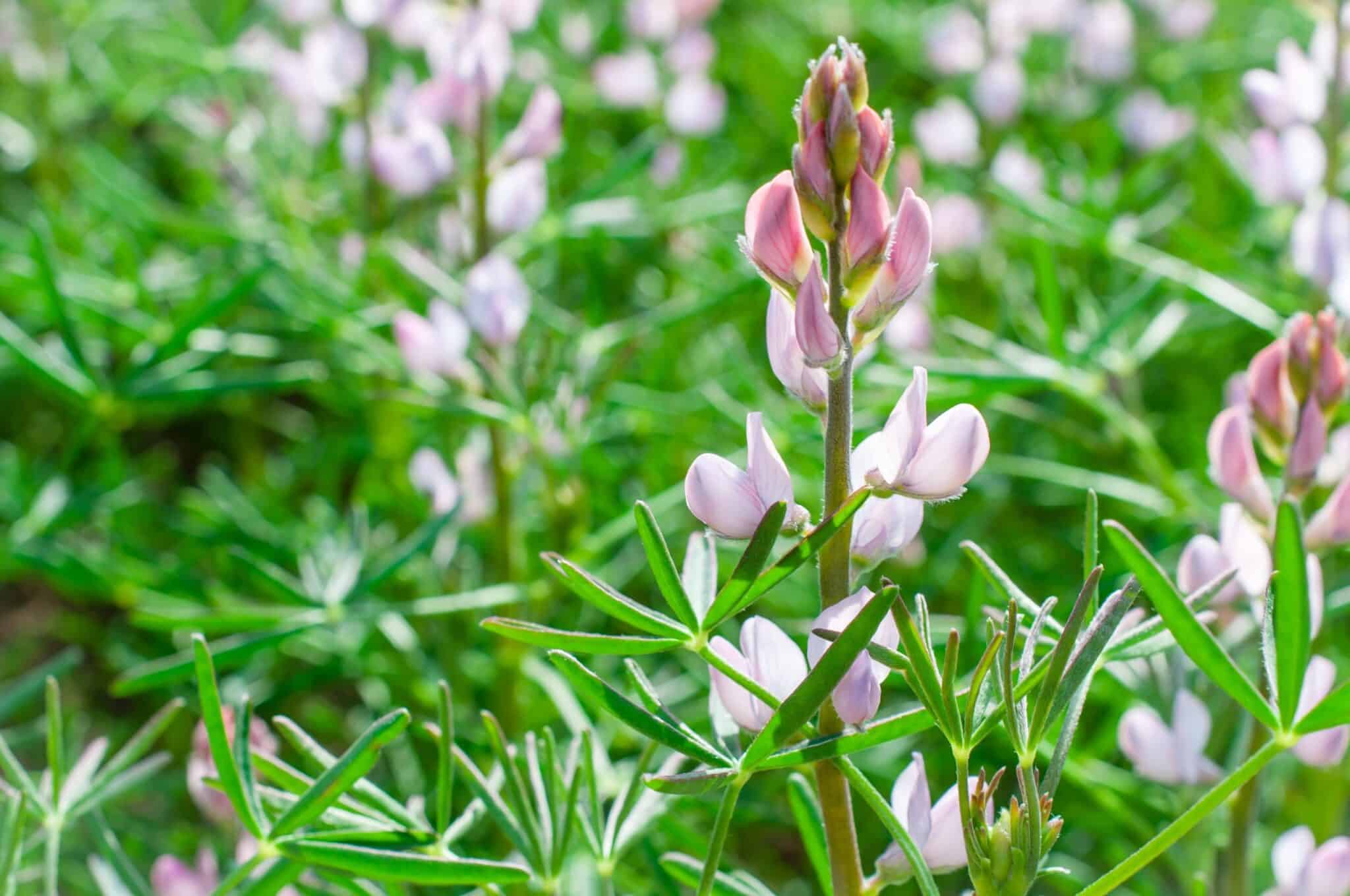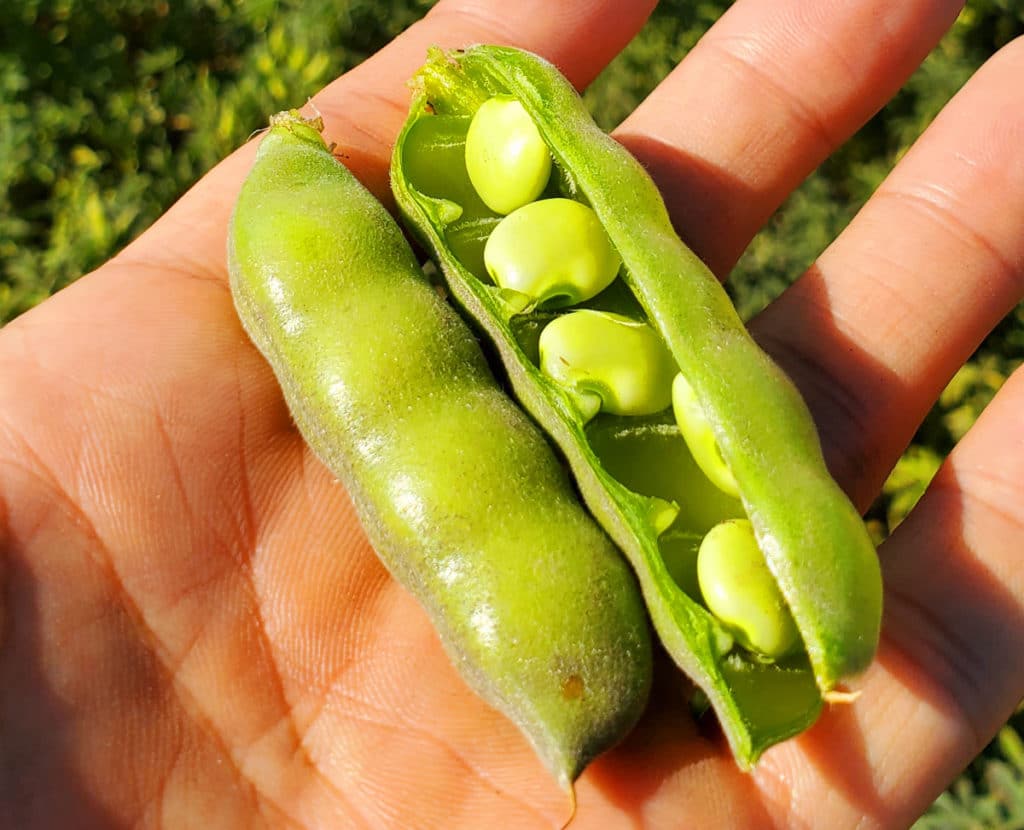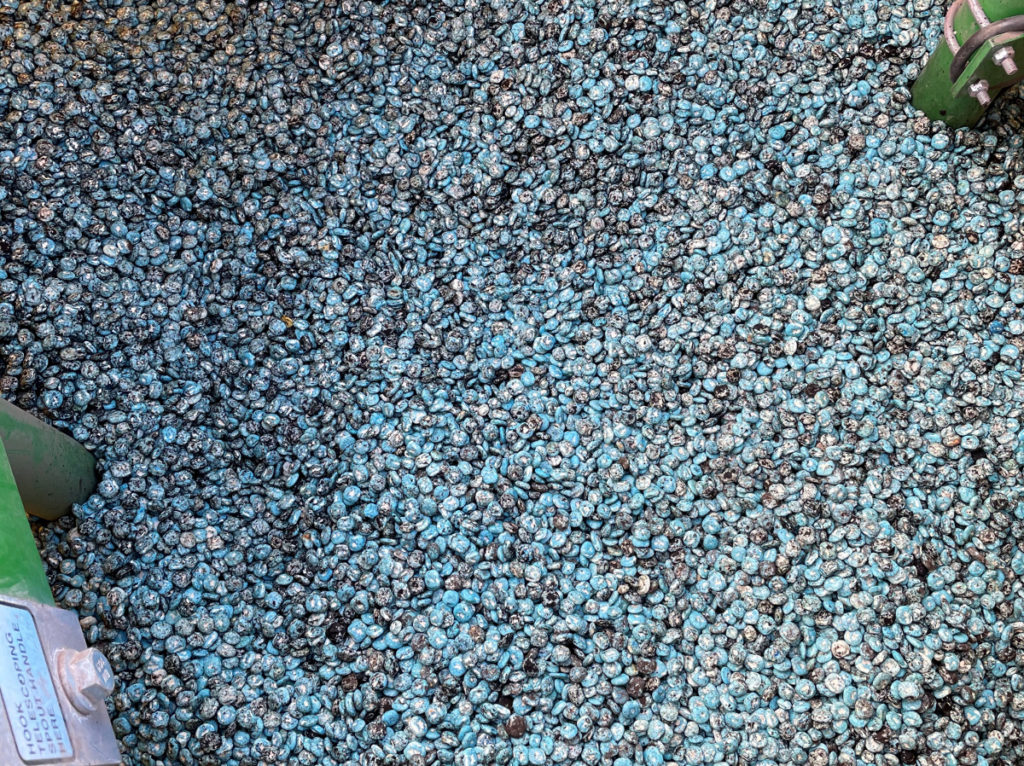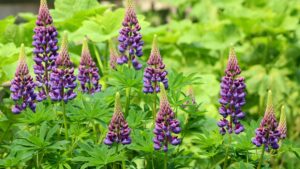What’s next in breeding this exciting high-protein and “quirky” crop
As the European livestock sector looks to replace imported soybeans in animal feed, other high -protein crops are in the spotlight including lupins. Because of its potential as a high-protein feed and food ingredient, lupin has never had more attention.
Many factors are converging in the heated competition for better varieties.
The main lupin species bred today are Lupinus albus, known as white lupin; L. angustifolius, narrow-leaved or blue; and L. luteus, yellow. They are similar in phenotype, but with different soil requirements and yield potential. They each have a protein content of 35 to 45 per cent dry matter, generally more than peas or other legumes, and a yield comparable to peas.
In terms of feed value, lupins, peas and field beans are too low in sulphur-containing amino acids to meet the needs of some livestock species such as chickens. However, the content of these amino acids can be a bit higher in lupins compared to peas and lupin’s protein price per kilogram is lower than soybeans.
Protein and yield are maximized at lower soil pH levels – in recent research, 7.5 at most for white lupin, and 6.8 for blue and yellow. And while lupin seeds are relatively low in carbohydrate, they do contain moderate amounts of fat: In white lupins, up to 14 per cent, mostly unsaturated, and carotenoids, such as beta carotene and lutein.
In addition, lupin fixes nitrogen when properly inoculated, helping boost yields in the crops that follow and improve soil as a ‘green manure’ cover crop. Lupin is also generally more drought- and frost-tolerant than crops like soybean and can therefore be grown in more northern locations and at higher altitudes.
While lupin has potential, with the low seed sales volumes, it can be challenging to justify breeding investment. To find out where things stand at this point, European Seed spoke with Thomas Eckardt, General Manager at Saatzucht Steinach in Germany, David McNaughton, Director at Soya UK, a seed company which works with lupin breeders at the National Academy of Agrarian Sciences of Ukraine, Frederik Schirrmacher, Product Manager at Deutsche Saatveredelung (DSV) in Germany, Manuel Deyerler, Breeder at Landwirtschaftliche Lehranstalten Triesdorf in Germany, Nathalie Harzic, Breeder at Cérience in France, and Paweł Barzyk, Breeder at Poznańska Hodowla Roślin (PHR) in Poland.
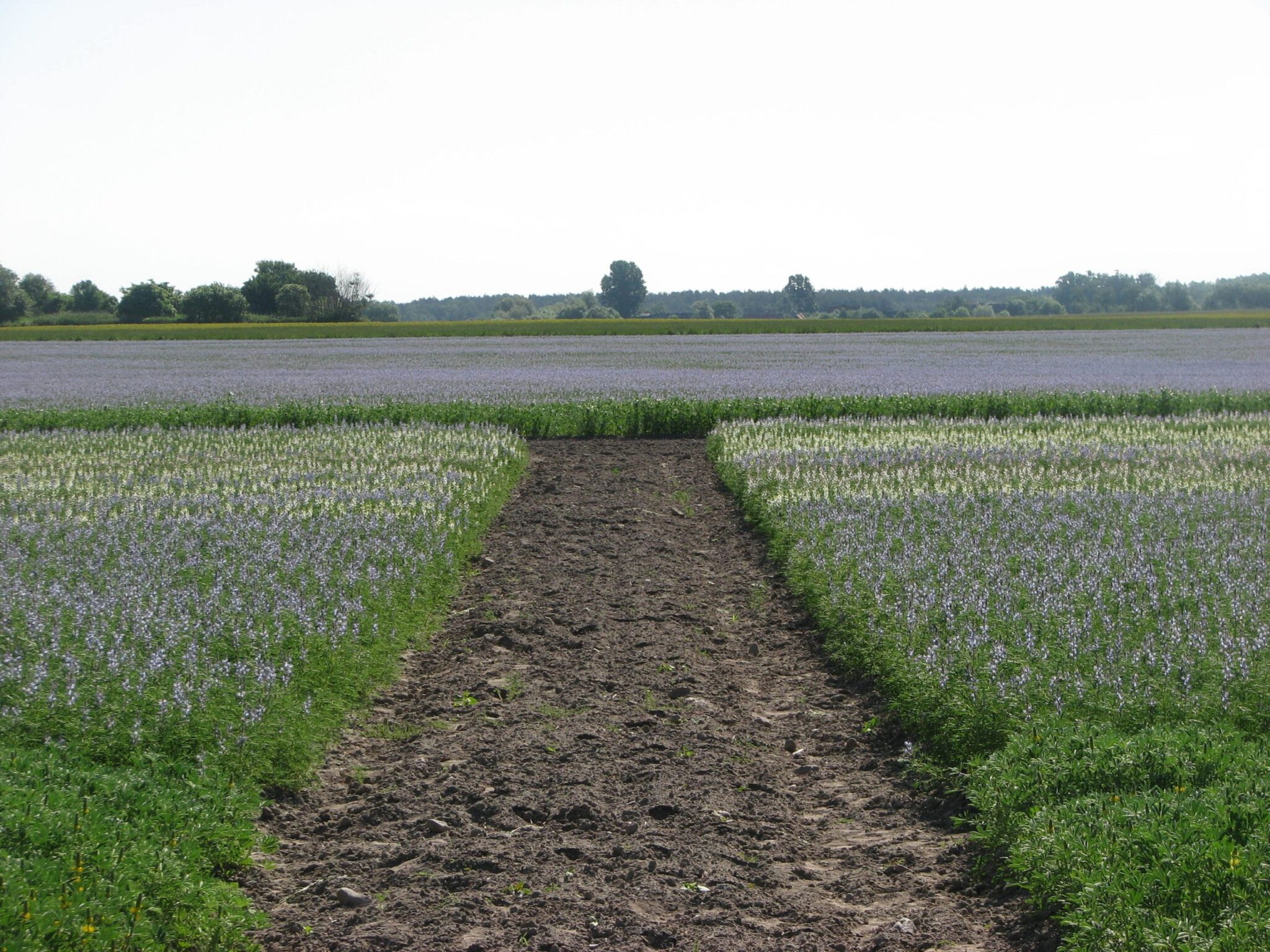
Breeding Overview
It takes from eight to 15 years to develop a new lupin variety, and above all, they must contain low amounts of alkaloids. The maximum alkaloid levels are similar for feed (0.05 per cent) and food (0.02 per cent). Modern cultivars contain 0.02 per cent or less.
However, minimizing alkaloid level can have a negative impact on yield performance and protein content, and can also strongly fluctuate with yearly environmental conditions, Deyerler explains. It’s important to note that ornamental varieties contain dangerously high levels of alkaloids and should never be consumed by humans or animals.
None of the participating companies in this article have separate breeding programs for food or feed uses. One of the biggest challenges to dedicating breeding programs to lupin is the food industry doesn’t pay higher prices for quality. Both pay by weight, not by component, but both want to have as much protein as possible, notes Eckardt.
The underpayment to farmers for lupin protein can be seen from looking at Germany, where farmers receive the same price for lupins (at 35 per cent protein) as for peas (20 per cent protein) plus ten euros per tonne. The protein level is difficult to influence in lupin, McNaughton adds.
Shatter resistance is critical to achieve high-yielding lupin. The next most important factor is resistance to anthracnose (Colletotrichum lupini). It’s because of lupin’s susceptibility to this disease the crop was largely ignored by breeders for the past two decades. Much recent progress has been made in breeding for resistance, and early maturation is also a goal for some breeders.
In terms of specific lupin breeding activities:
- Saatzucht Steinach is working with Brigitte Ruge-Wehling and others at the German Federal Research Centre for Cultivated Plants (the Julius Kühn-Institut, JKI) to improve luteus yield and susceptibility to anthracnose.
- Soya UK is working with breeders at National Academy of Agrarian Sciences of Ukraine and has a breeding program for white lupin, with sources of blue and yellow varieties from other breeders in Europe or Australia. McNaughton notes lupin is a ‘quirky’ species with a lot of genetic diversity, so stabilising traits in a new variety is difficult.
- Cérience has taken over the lupin breeding programs of INRAE and the company LUPSEM, with breeding focus on the selection of white winter lupin varieties with better yield potential in France, but also spring varieties with early maturation. Cold tolerance is a major criterion for varietal evaluation, and Cérience has trial sites halfway up some medium-sized mountains in France. Varieties developed today are determinate, dwarf types.
- Deutsche Saatveredelung only breeds white lupins. “The biggest challenge is the limited gene pool,” says Deyerler, “and the level of climatic adaption of some candidates. This means that some candidates from gene banks can only be cultivated in some specific climate regions. However, white lupin can be grown across more conditions because it tolerates a broad spectrum of soil pH.”
- All three lupin species are bred at PHR for livestock feed and as a green manure crop. Blue and yellow cultivars have satisfied yield potential, low alkaloid content and moderate resistance to anthracnose. In white lupin, the PHR breeders are working to increase oil content from 10 to 14 per cent. Barzyk says gene pyramidation via convergent crossing program should combine high yield with earliness, anthracnose resistance, low alkaloid, and high oil content. Yield stabilization as a result of resistance to disease, along with flower abortion decrease, are the biggest challenges in developing new cultivars of all three lupins.
Photo: Saatzucht Steinach
Yield Limits
Eckardt notes lupin yields are significantly higher on better soils (5-6 t/ha) and the genetic yield potential of Saatzucht Steinach cultivars is about 7-8 t/ha. The firm’s branching types gain about 1.4 per cent yield per year.
“The terminal (determined) types are less productive, very early ripening and suitable for border areas of lupin cultivation,” Eckardt explains. “The market for them is small, although they have advantages such as late sowing, more even ripeness and pods above the leaf mass.”
McNaughton reports yields of his white lupin can surpass 5t/Ha, with 38 per cent protein and 11 per cent oil.
“Yield increases in the last 20 years have run at about one per cent a year,” he reports, “but it is not a linear development and hard to measure due to variability.”
In the past few years, yield gain of new PHR cultivars has been two to three per cent per year. Barzyk explains yellow lupin gives the lowest yield but has the lowest soil fertility requirements, whilst white lupin is the opposite with both.
For his part, Deyerler observes there is a significant difference in the yield of white lupin compared to varieties from 20 years ago but can’t say what percentage has been gained. Similarly, Harzic says that in France, because lupin has not been a major crop species, yield gains have not been tracked.
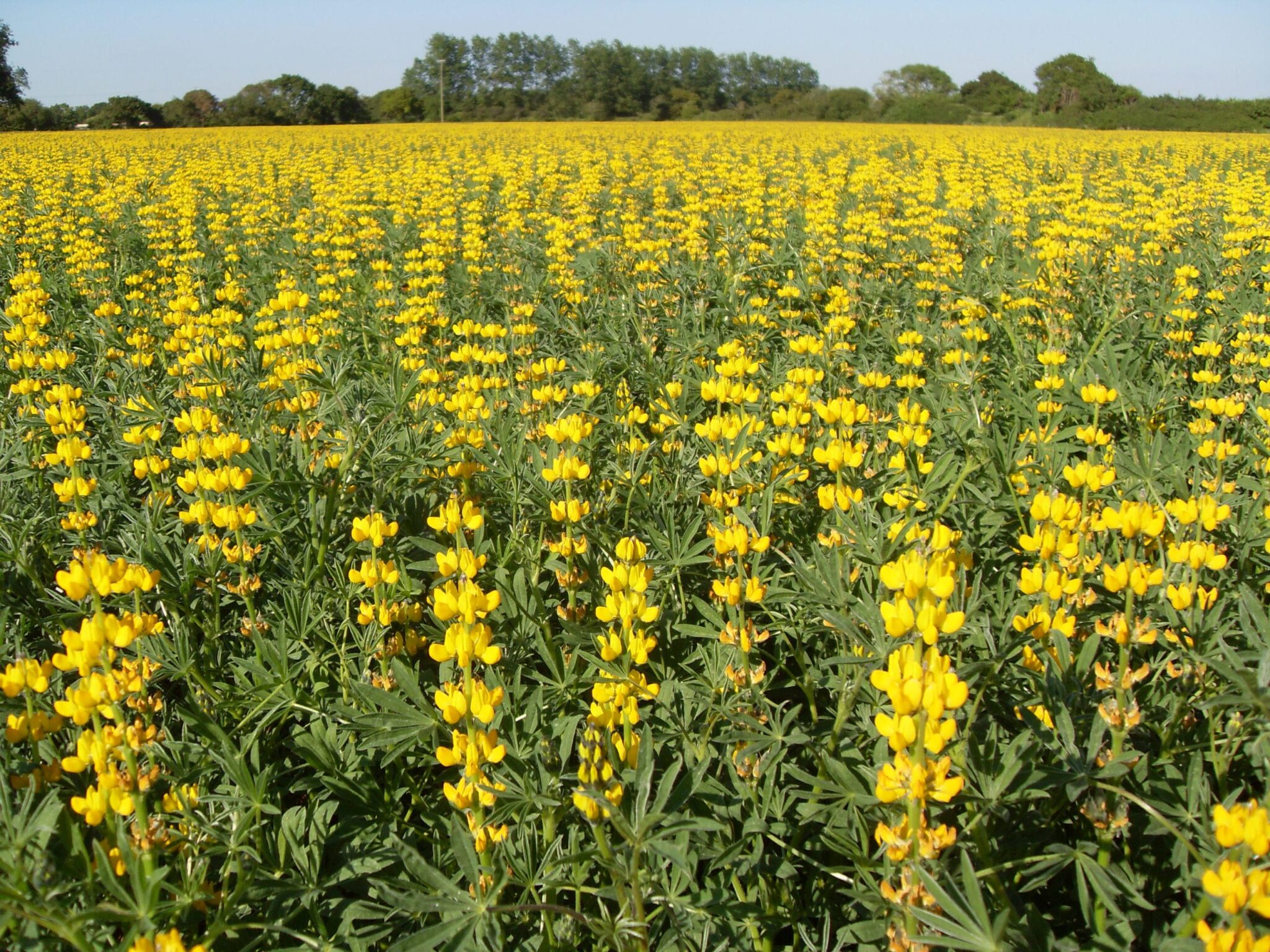
Disease Threats
Anthracnose is the biggest disease threat, and resistant varieties are not registered. Fusarium and additional root diseases are also concerns.
Because there are no genetic sources with high anthracnose resistance, Barzyk says that resistance progress for the next decade is difficult to predict.
Harzic notes that the impact of the disease is less in winter lupin versus spring lupin. Because anthracnose is a seed-borne disease, farm-saved lupin seed is prohibited by EU-law.
“It’s perfectly possible, however,” says McNaughton, “to keep anthracnose under control if the seed multiplication crops are well managed and the correct fungicides are used at the correct time.”
However, Deyerler explains increasing lupin acreage will mean a rise in anthracnose pressure. Farmers need education on proper cultivation and breeding progress for this disease and other threats.
“In the last few years some new diseases and pests have been found, mainly viruses and insects,” Deyerler adds. “In most of the cases that damage was tolerable, but it’s not surprising that new threats are emerging now. Lupins weren’t cultivated for a long time and now they are.”
Eckardt reports along with the increasing cultivation of white lupin in Germany, he and his colleagues are hearing about several outbreaks of anthracnose in white lupins.
“In terms of resistance genes, there are two resistance genes available, Lanr1 from Australia and our own LanrBo, and we have incorporated both into our breeding material,” Eckardt says. “Our strains are up to 90 per cent resistant when LanrBo is included. They show very good resistance until harvest, but yield is still slightly behind the best conventional varieties by about four to 10 per cent.”
Ruge-Wehling at JKI explains a few molecular markers for these two resistance genes are available for pre-breeding programs.
“A project is currently underway between the JKI and the Bavarian State Institute (LFL) to identify resistance to anthracnose in a wide pool of white lupins,” she says. “More than 100 gene banks have been accessed to check for resistance. In a current project on yellow lupin, a monogenic dominant resistance to anthracnose was demonstrated.”
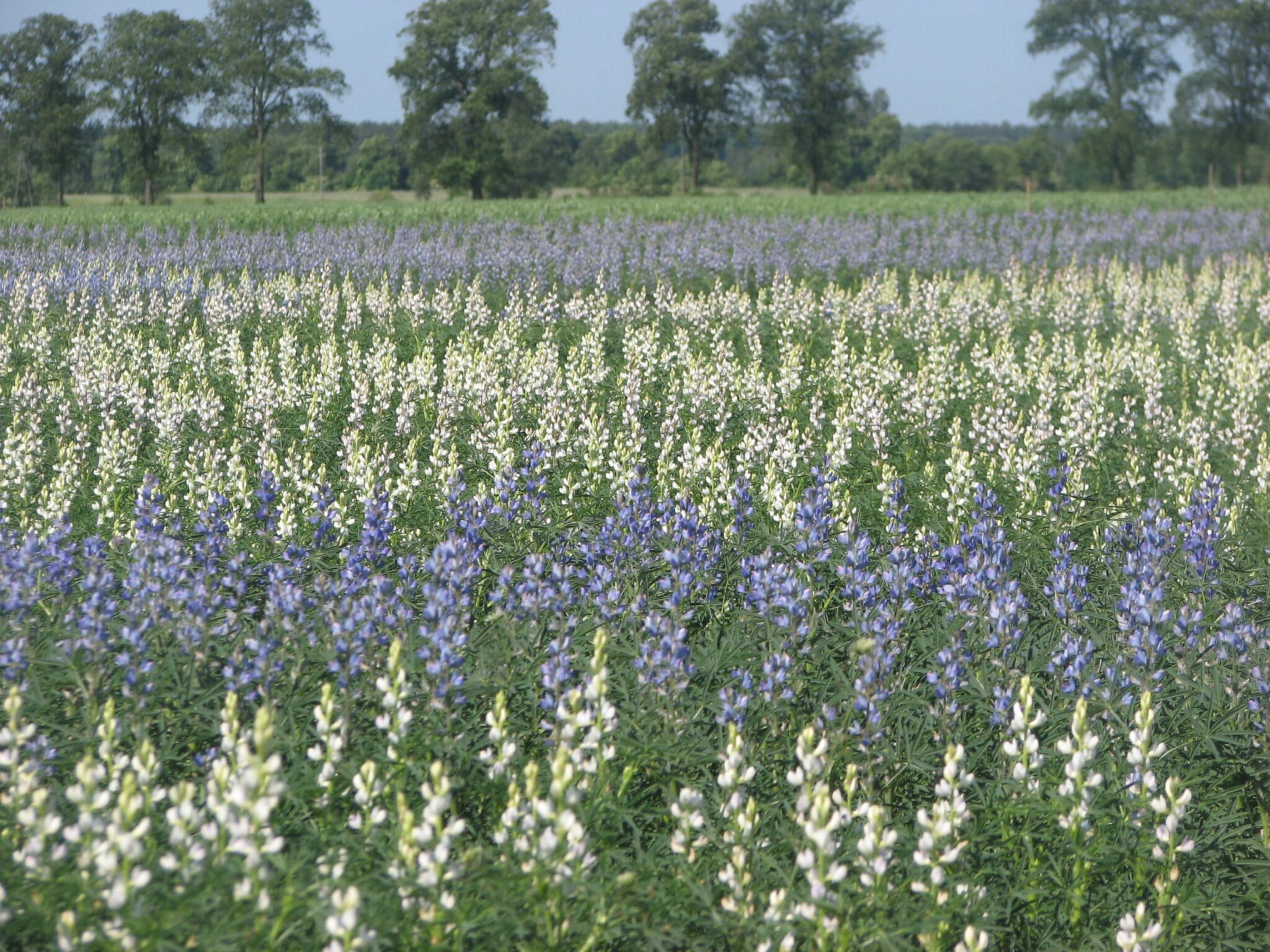
Sources of Genetics
Deyerler and his colleagues at Deutsche Saatveredelung continue to screen material from different gene banks and registered varieties from all over the world.
“A big part of our material is coming from historic sources in the south of Germany,” he says. “This has been strongly selected and combined with gene bank material and other varieties. As the gene bank material is limited, access is basically difficult, but the new ABS rules pose no bigger limitation so far.”
For its main sources of genetic diversity, PHR uses breeding materials and the domestic collection coordinated by the National Project for Plant Genetic Resources with more than 1,200 Lupinus accessions. The International Lupinus Collection Database is also available.
There is plenty of germplasm to work with for SoyaUK’s breeders.
“During the Soviet times, much germplasm was gathered from many locations around the world,” he says. “Accessions to our collection began in the 1950s, so it’s large. We continue to add to it.”
Harzic at Cérience notes that INRAE is an important genetic resource centre for breeders in France, with a collection based on surveys carried out in the 1980s around the perimeter of the Mediterranean basin. The first winter-types were identified in the populations collected in Italy.
Saatzucht Steinach uses its own germplasm as well as material from gene banks and breeding material from other countries.
“At the moment we do not see any general difficulties or problems that we cannot solve in private-public partnerships,” Eckardt says. “The gene center of L. angustifolius is located in the Mediterranean area and belongs to the EU.”
Innovations Available
Harzic notes the white lupin genome was sequenced and published in 2020 but results of this research have not been used much by breeding companies to date.
At PHR, in vitro plus embryo cultures are being used for speeding up homozygotization and increasing the number of progenies per year, along with new screening methods for alkaloids and the use of molecular markers.
Eckardt reports, after several research projects, his team is transferring the marker-based selection of various traits into breeding trials. If gene editing technologies, such as CRISPR/Cas, can be used in the EU, many benefits can be achieved with lupin, he adds.
“For example, the content of the sulphur-containing amino acids methionine and cystine could be increased, thereby improving feed value,” he says. “Also, the content of oligosaccharides, which limit the use of lupins in the feeding of monogastric animals, could be reduced.”
Lupins around the world
At this time, about 96 per cent of lupin is grown for livestock feed, and mostly in Australia. It was historically gathered or grown by ancient people as a livestock feed, but also as a food source. Indeed, in addition to current attention that lupin is garnering as a high-protein feed ingredient, it is being closely examined for much greater use in food products, as support for plant-based foods rises through initiatives such as the EU Protein Plan.
Lupin seeds have been found in ancient Egypt dating back to the 22nd century B.C.E. The crop was spread throughout the Roman Empire, and in the Western Hemisphere, lupin seeds were also a common food during the Incan Empire period and for some Native American tribes. Today, the seeds are still a very popular snack in Egypt, especially during the ancient Sham el-Nessim festival. In parts of Europe and Australia today, lupin bean flour is combined with wheat flour in pancakes and baked goods. A lot of information on lupin usage, breeding and cultivation can be found in proceedings of conferences organized by the International Lupinus Association.
Weed and Pest Control
In Eckardt’s view, the biggest problem for lupin to grow in acreage in Germany is the increasing shortage of pesticides.
“There is no longer any approved herbicide, we only have the option of combating the weeds in the pre-emergence phase and that soon will only be possible with an application and a special permit,” he says. “Post-emergence herbicides are not permitted. Reglone (deiquat or diquat) has recently also been banned, so that harvesting relief in general and harvesting acceleration in wet years are no longer possible.”
Saatzucht Steinach is spending large amounts of its breeding budget on developing solutions for the farmer so that he or she can continue to grow lupins successfully despite these disadvantages. This includes studies on weed control by harrowing and hoeing in combination with different row widths, sowing depths, sowing strengths, and sowing times.
They are also testing the use of swathing (which Eckardt says is, so far, a disaster due to insufficient burst resistance of the pods) and applying beneficial bacteria species Bradyrhizobium lupini. They are also involved in seed treatment projects with electrons and/or plasma.
Saatzucht Steinach has also been intensively involved in private-public partnerships to develop forecast models for infestation of the scarab beetle (weevils in the Sitona genus) for which there is currently no crop protection product defence, and anthracnose.
“The farmer can now apply products only when there is danger,” says Eckardt. “It’s a good contribution to environmental protection and cost reduction. In addition, studies are currently underway on the use of parasitic nematodes against the larvae of Sitona.”


